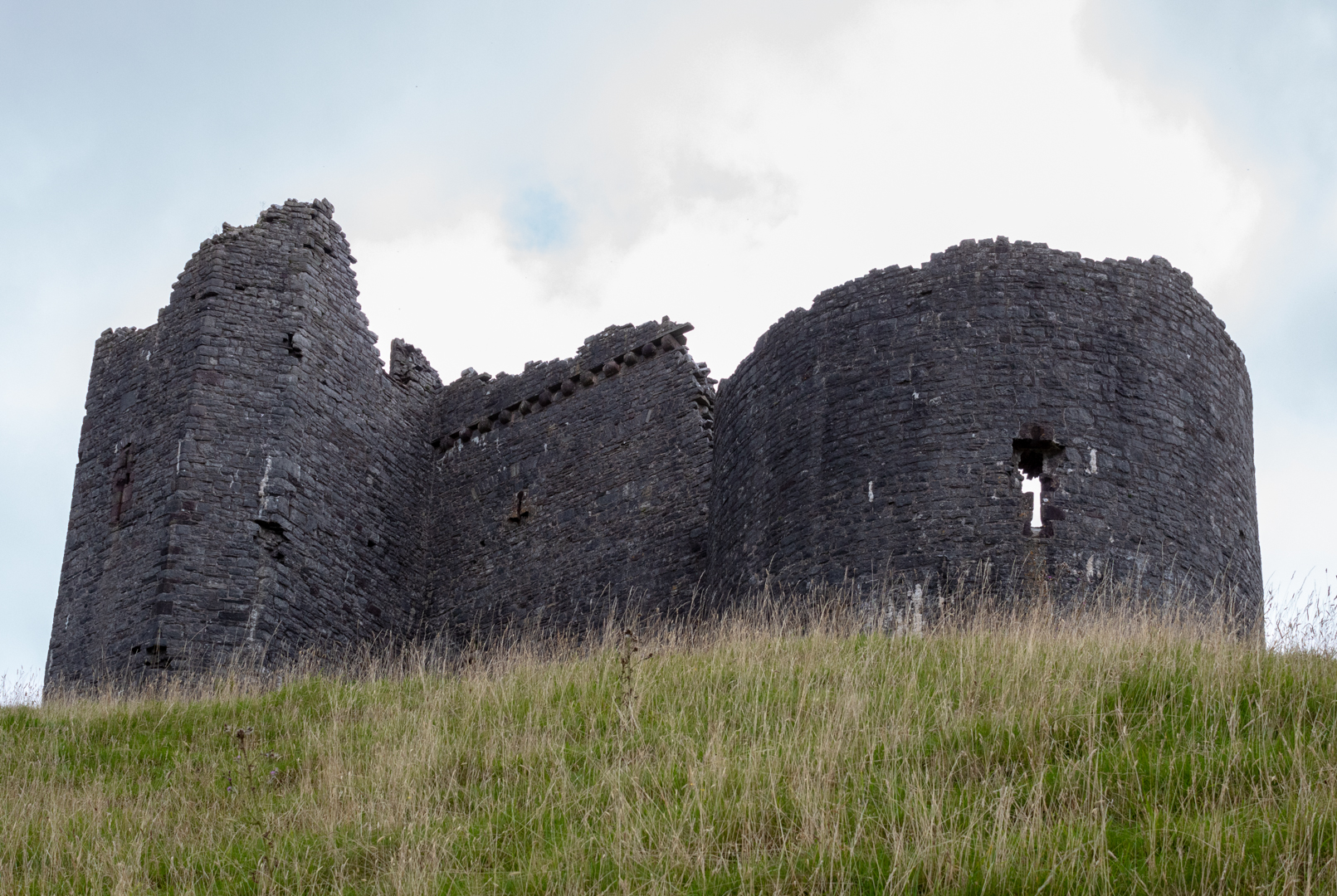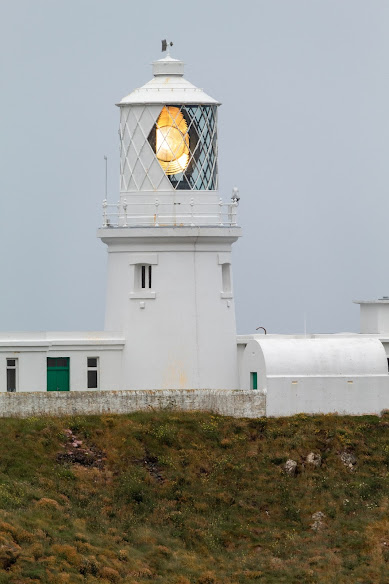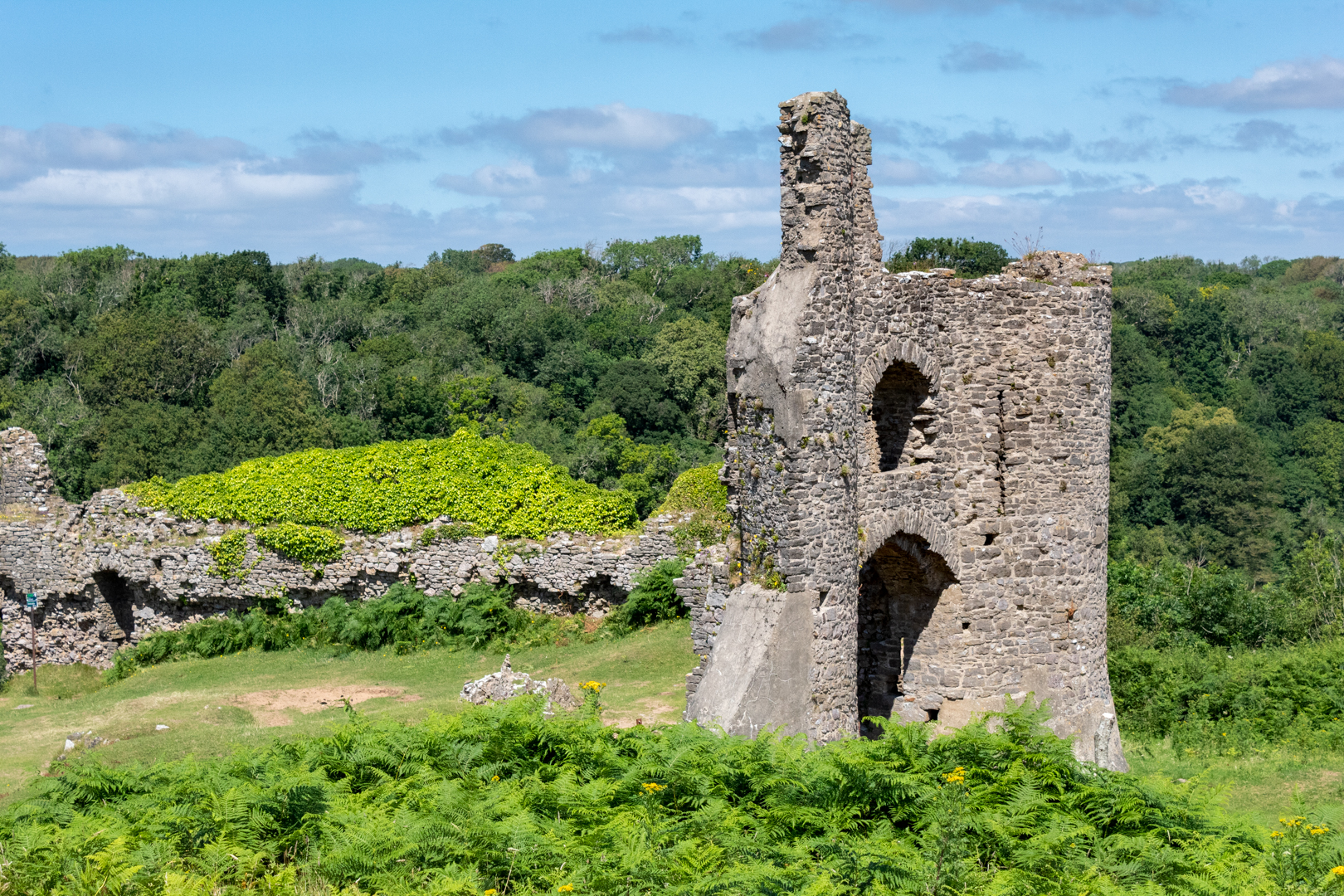Visit Date : August 2021
The car park (51.85656999860168, -3.9376914809885473) is free with many spaces and overflow spaces. There are toilets and a "must visit" tea room and gift shop.
Read More
WELSH: Castell Carreg Cennen meaning castle (on the) rock (above the) Cennen) is well named as this fortress is well above the outlying land high upon a limestone cliff.
The site has a long history and may well have also been the site of an Iron Age hillfort.
There is also some Roman history as Roman coins have been found in the area, although it is unlikely the Romans occupied this site on a permanent basis.
Legends of the original fortress goes back to the Dark Ages, held by Urien Rheged, Lord of Iskennen, and his son Owain, knights during the reign of King Arthur.
Stories claim that there is a warrior (perhaps one of the knights, or Arthur himself?) asleep beneath the castle, awaiting a call from the Welsh.
As with many Welsh castles, they will have been built, rebuilt and altered through the ages.
The first "castle" on the site was probably built by the Welsh Lord Rhys, Prince of Deheubarth, in the late 12th century, but was taken in 1277 by King Edward I.
The castle we see today replaced the demolished previous structure in the late 13th century by John Giffard and his son.
It was involved in many battles and was besieged during the rebellion of Owain Glyndwr in about 1403 and was considerably damaged.
Around 1461, the castle was deemed too much of a threat to the monarchy and was destroyed the following spring and is basically in the same state today.
Despite being in a ruinous state in the 18th century it started to attract artists (Turner sketched the castle in 1798).
In the 1960s Carreg Cennen Castle was acquired by the Morris family of Castell Farm, when Lord Cawdor's legal team made a mistake in the wording of the deeds and included the castle as part of the farm.
The image below is an interesting feature (at least to me) was this tower with the hole at the bottom. It was the outlet for the latrine.
Although today the Castle is maintained by CADW: (Welsh Historic Monuments) the castle is still privately owned and managed along with the farm and tea rooms by Margaret & Bernard Llewellyn and their Daughters.
Footer:
Visit Information:-
Google Reference 51.854408996393424, -3.935643592179748
Google Search reference: Carreg Cennen Castle
What Three Words reference : ///reason.winners.routs
The site is easy to find Leave north from Ammanford and turn left onto Ffordd Wern Ddu it is signposted from here.
Visit Information:-
Google Reference 51.854408996393424, -3.935643592179748
Google Search reference: Carreg Cennen Castle
What Three Words reference : ///reason.winners.routs
The site is easy to find Leave north from Ammanford and turn left onto Ffordd Wern Ddu it is signposted from here.
The car park (51.85656999860168, -3.9376914809885473) is free with many spaces and overflow spaces. There are toilets and a "must visit" tea room and gift shop.




















































